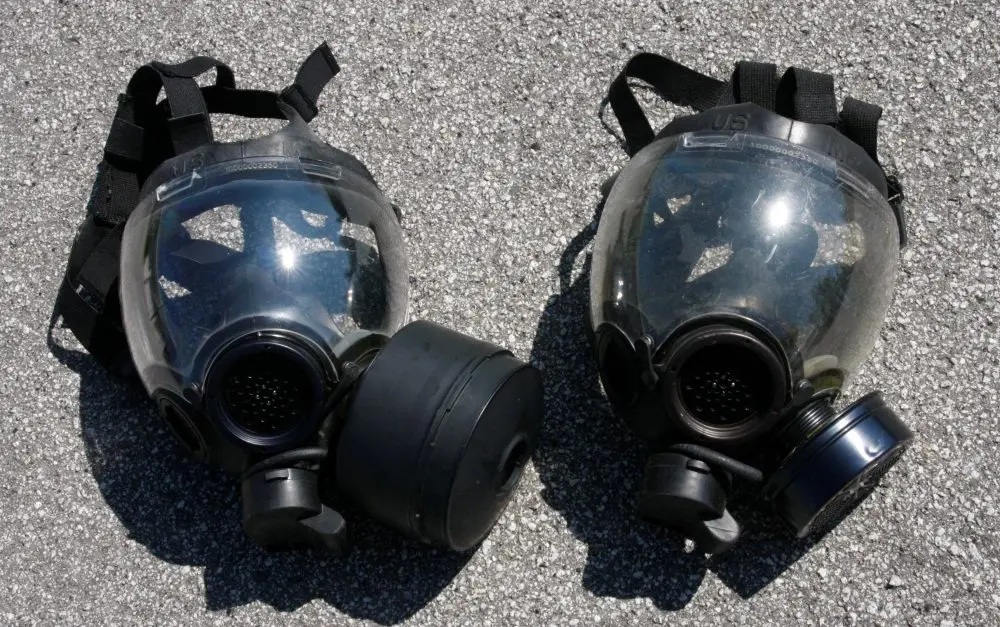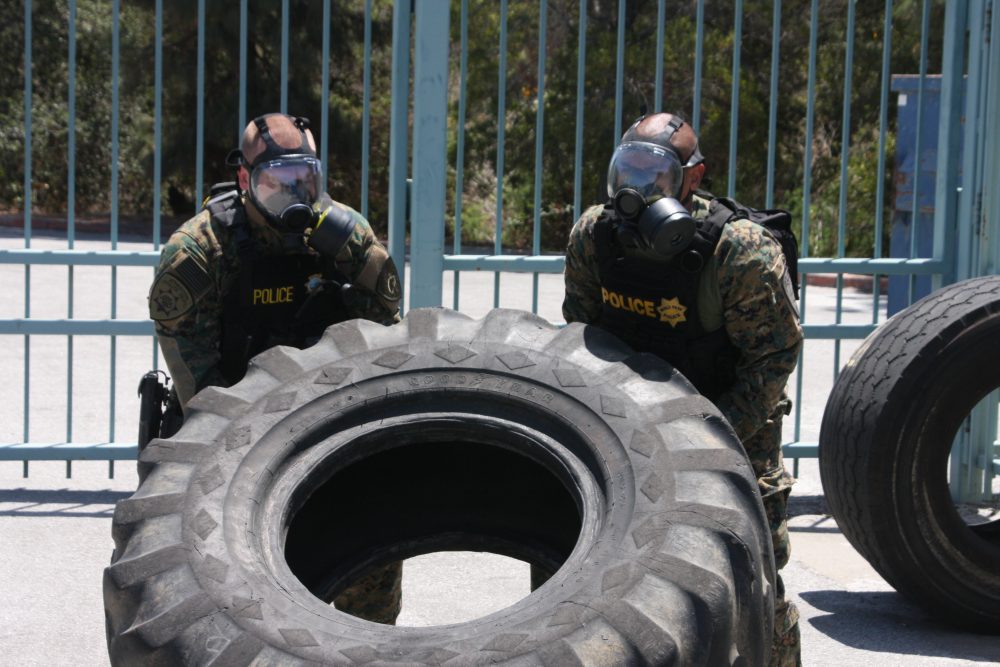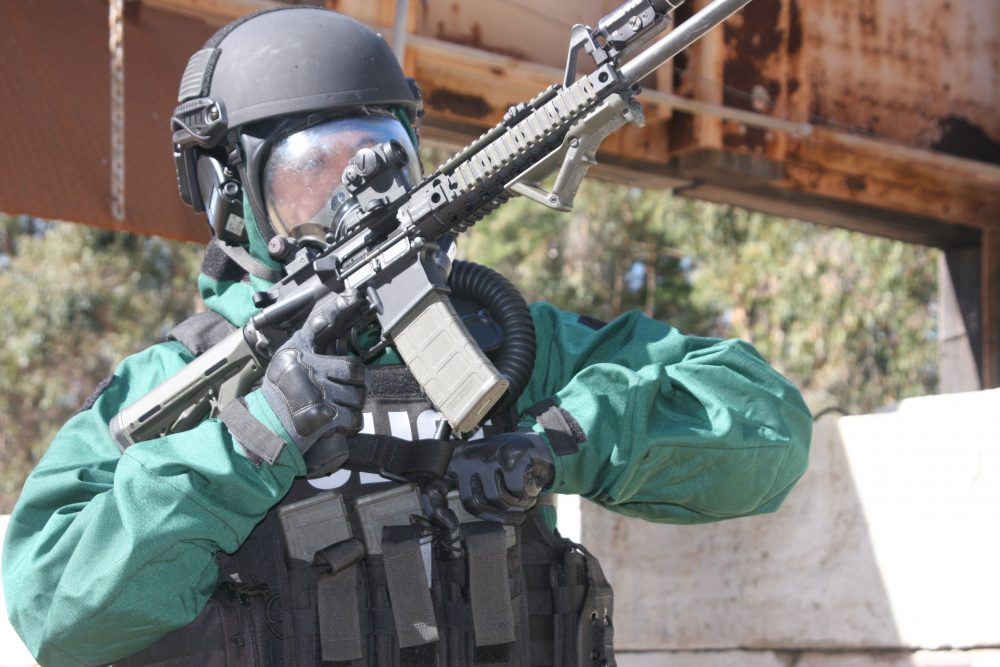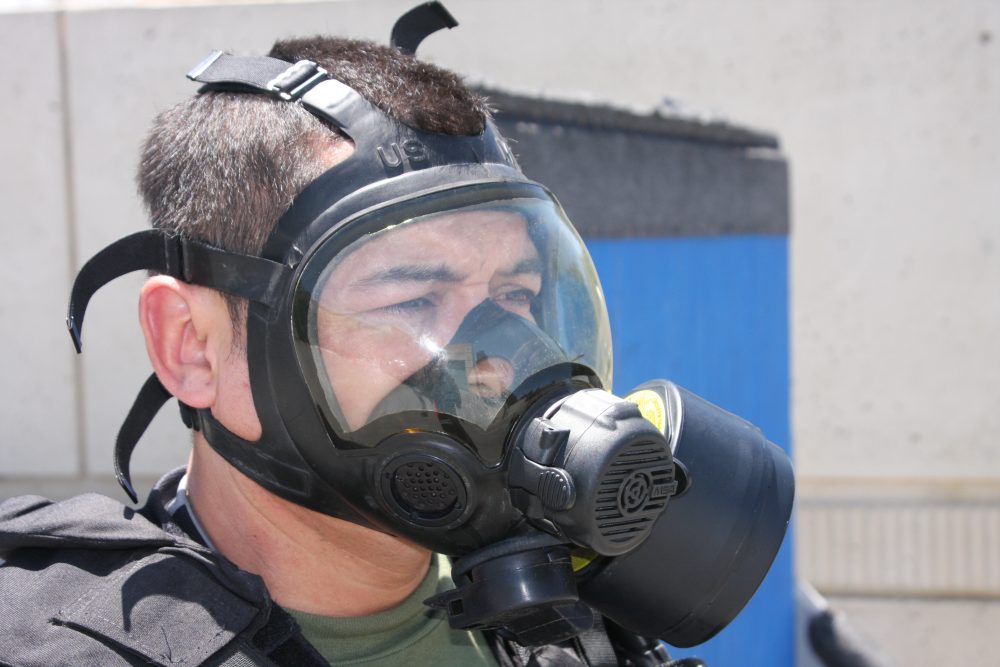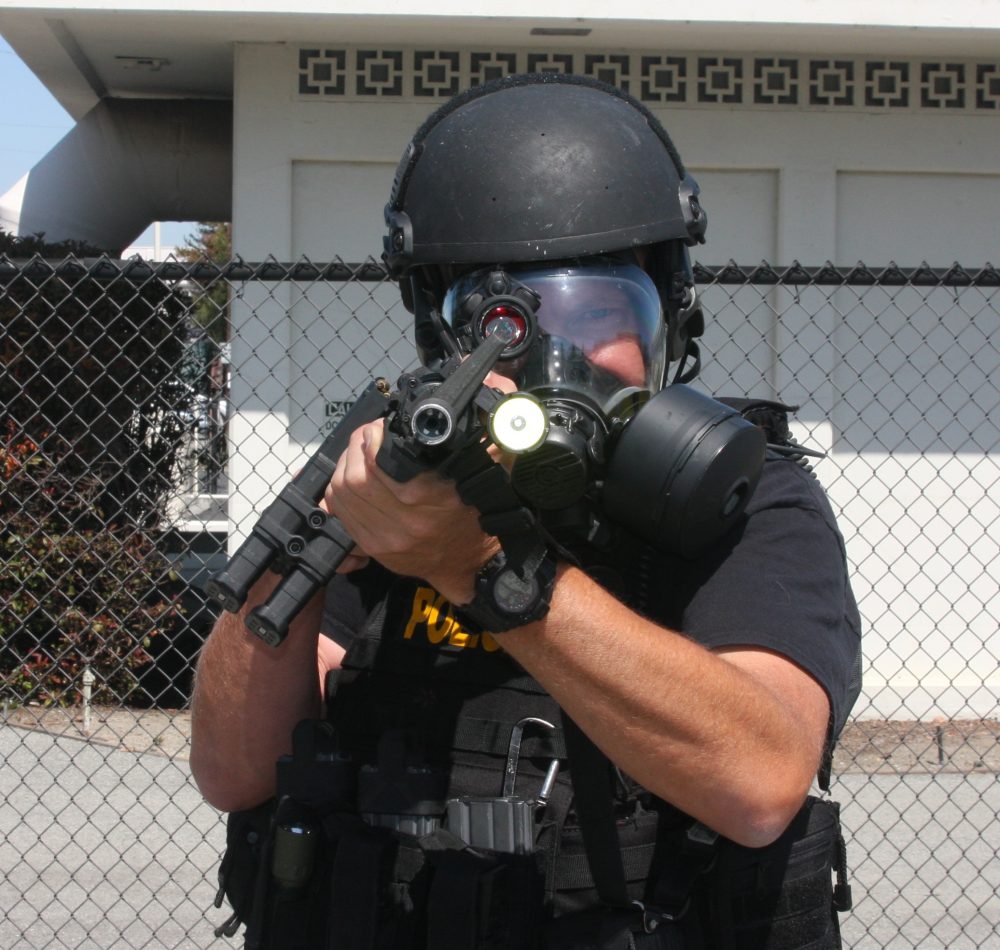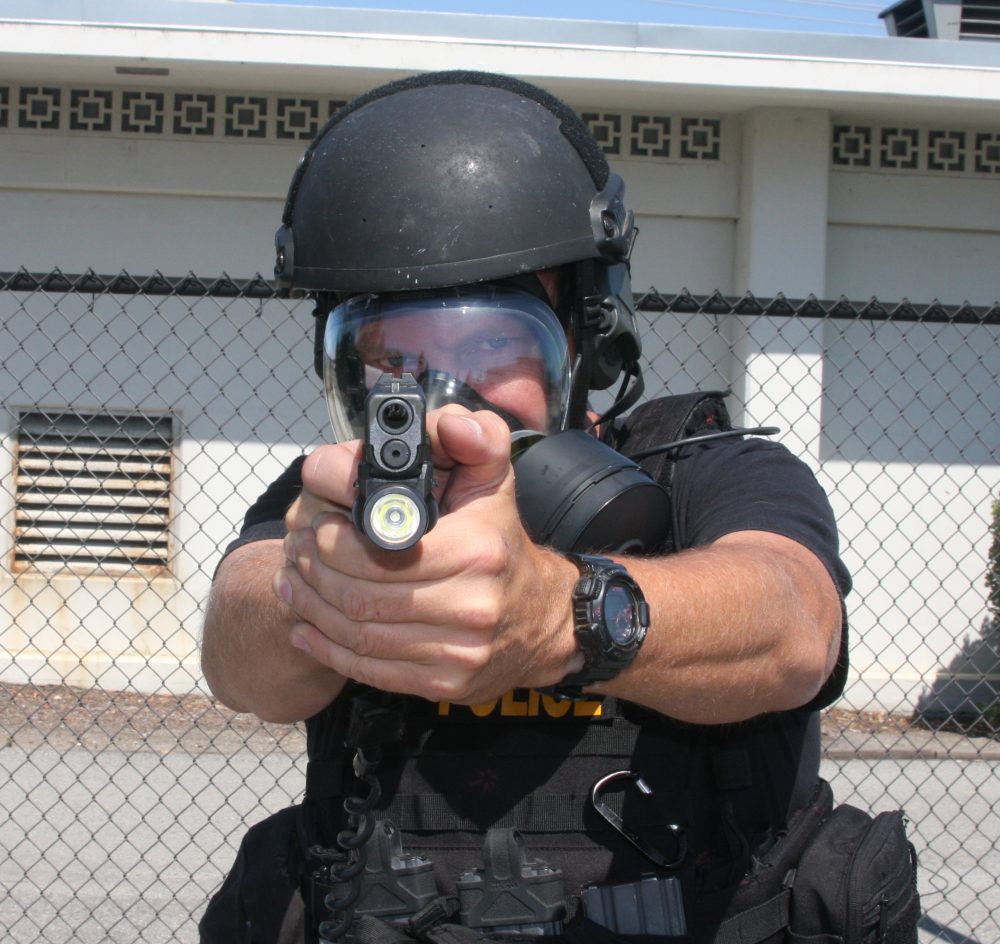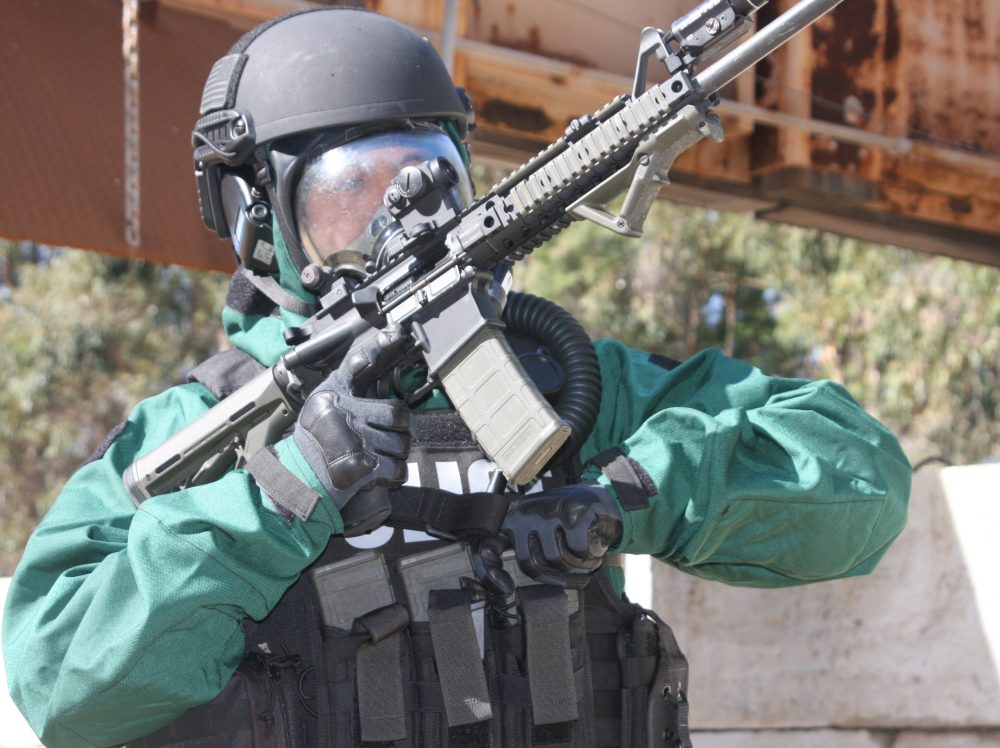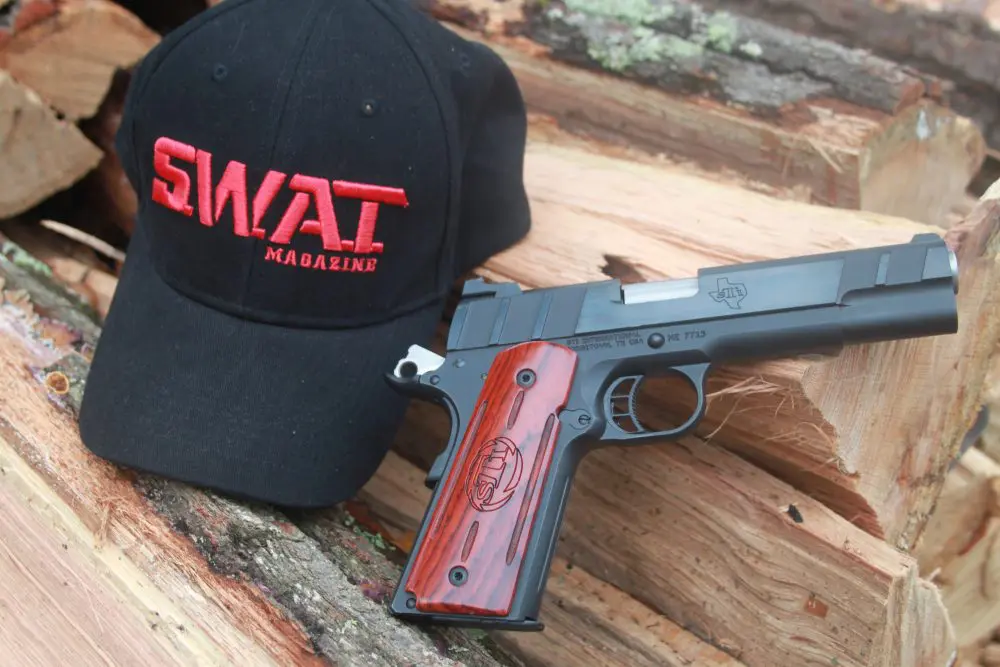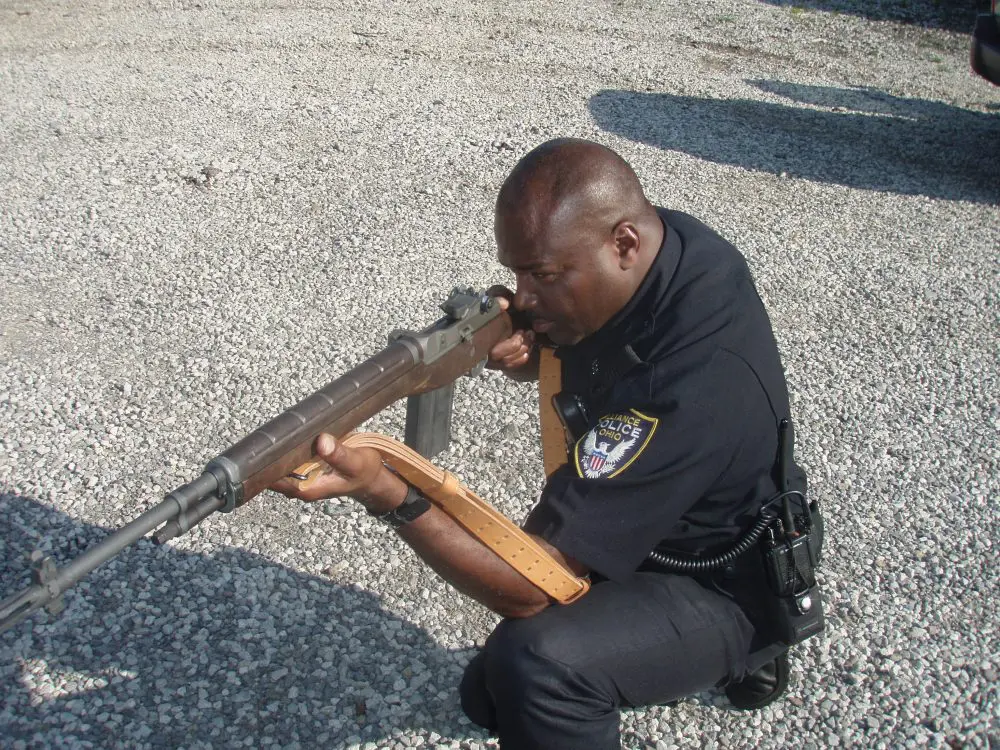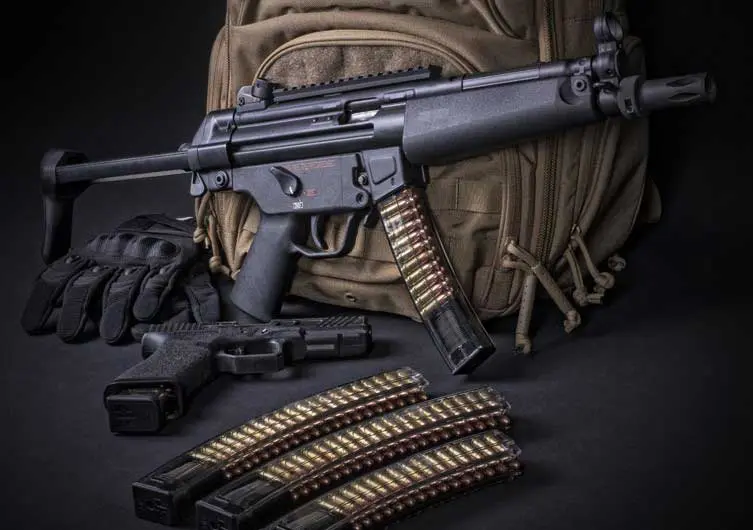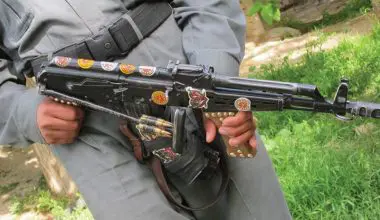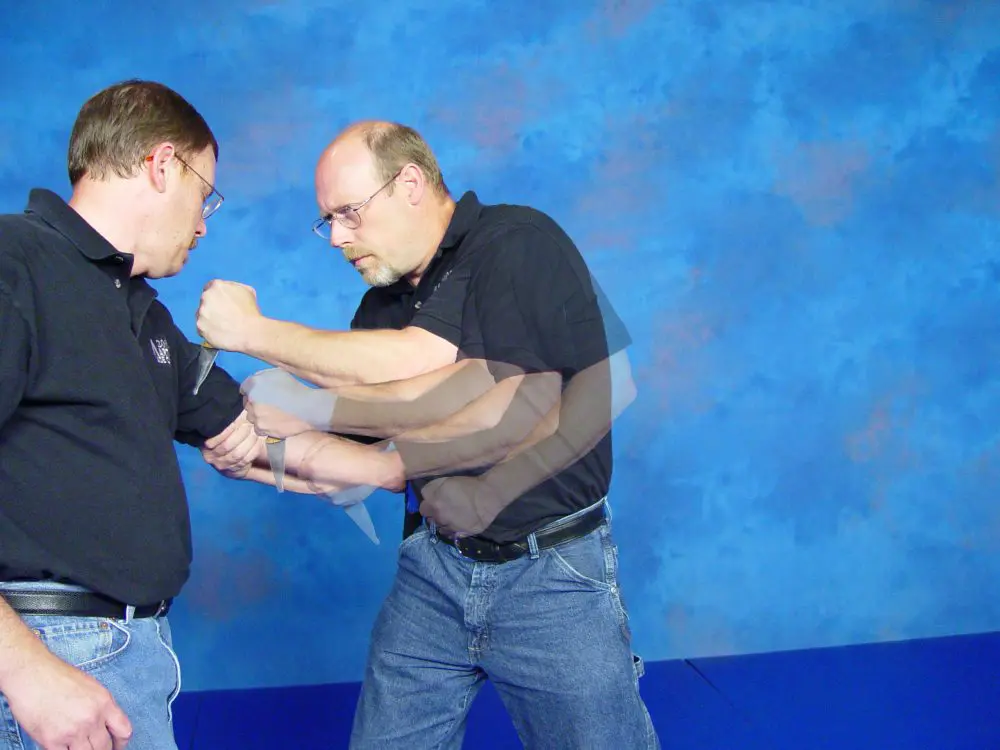It is often said you should train as much as possible with your equipment so when the time comes to use it for real, everything is second nature. One aspect of officer training that is often overlooked is shooting with a gas mask on.
Most law enforcement officers only train with a gas mask when it is mandated, and that may only happen once a year—if at all. Private citizens who own masks may never train with one. But if you ever have to wear a mask when your life is on the line, you’d better have practiced with one first.
Size and weight difference between a Chem Bio Filter (left) and a standard chemical agent is substantial. Practice with the filter you will be using.
Soon after 9-11, there was a big rush to equip all officers in our area with gas masks and chemical suits in the event of a terrorist attack. We’d previously had masks available to us, but they were not individually issued. They were used primarily for crowd control, with the only threat being CS or CN gas. But with the specter of a chemical or biological attack, we were issued individual masks that actually fit properly.
Unfortunately, after the big push to get the masks issued and some initial training, the masks found their way into patrol bags and lockers and were soon forgotten about. I am sure this occurred in other agencies as well. This needs to change. It is time to get the masks out and make them a part of your ongoing training regime.
Doing a tire flip during PT with masks can build stamina and teach you to monitor your breathing.
Table of Contents
MASK SELECTION
All types of gas masks are available for law enforcement and civilian use. If you have a say in what mask you or your department will use, consider the following. Besides being an effective mask to stop chemical and biological agents, your ability to see out of the mask is very important.
Some older masks, such as the military’s M17 mask, had two eyelets that did not provide the user with a great deal of vision. Newer masks from MSA and AVON have a single face shield that increases your field of vision considerably.
No matter what mask you have, your peripheral vision will be affected, in some cases as much as 25%. This is a concern for operating in high-risk environments, since you must maintain good situational awareness by being able to see what is going on around you. Limited vision forces the wearer to move his head much farther left and right than he is used to.
Besides affecting your vision left and right, your ability to look down is also limited. This will become evident when you attempt to locate gear on your belt or vest and have not practiced without looking. You will not be able to see where your equipment, such as magazines, handcuffs and radio, are.
Being able to access your gear without seeing it is critical.
Another aspect of mask selection is the ability to adjust the location of the filters. Can you decide whether the filter is on the left or right side of the mask? Does the mask require two filters, or is there only a single one in the center? Are you using a mask with a PAPR (Powered Air Purifying Respirator) or operating with an SCBA (Self Contained Breathing Apparatus)?
Both these systems require some sort of tubing leading to the mask. If you cannot change the location of the filters to meet your shooting style, you will have a hard time getting even a semi-quality sight picture, especially when using a long gun.
OPERATING WITH THE MASK
Once you have your mask selected, you need to train with it. This includes how to don and doff the mask and ensure you have a proper seal. Make sure you are “fit tested” with the mask you are issued. If you have the wrong size mask, you will not obtain or be able to maintain a good seal. That could let “the bad stuff” in.
As a member since 2002 of a Regional Terrorism Response Team that trains exclusively in gas masks, I have experienced all the discomfort a mask can produce. They can become uncomfortable and cause headaches and profuse sweating.
I have seen officers become so frustrated and uncomfortable wearing a mask they will suddenly rip it off to get some relief. Others will just break the seal and try to let in some fresh air during the exercise. This simply cannot happen in a toxic environment, no matter how uncomfortable the mask becomes.
Mask with a voice modulator aids in communication.
It takes time to get used to operating with a mask on. Your breathing patterns will be affected and you will have to learn how to control your breathing, especially if you are exerting yourself.
As practice for this essential skill, try wearing the mask while going through an obstacle course and see how well you do. How long can you keep the mask on before it fogs up or you start having trouble breathing?
By doing this in training, you can establish a baseline of how long you will be able to effectively operate in the mask. This is especially important if you are operating with an SCBA and have a limited amount of oxygen to use. A 60-minute bottle of air could be gone in 30 minutes or less if you cannot control your breathing. This will greatly affect your operational time at a crisis site.
In fact, a growing trend among endurance athletes is to wear gas masks or similar devices while working out, to increase their lung function and lower breathing rates.
This would also be the perfect time to find out whether you are claustrophobic. Some people simply cannot operate for any period of time while wearing a mask. They start to feel like everything is closing in on them, and they begin to panic. If this is going to happen, the training environment is the place to find out. With time and training, some officers who are affected by claustrophobia will be able to overcome the effects. Others will never be able to.
Shooting a long gun requires canting it. Knowing your mechanical offset will allow you to place rounds on target.
COMMUNICATION
Another aspect of wearing the mask that makes life more difficult is communicating with your partner. It is almost impossible to hear or understand someone who is yelling at you while they are wearing a mask. Their words will be indistinct and muffled. All you really get to hear are the adults from a Charlie Brown cartoon (am I dating myself here?).
To overcome this, officers should use and understand some basic hand and arm signals. The signals should be simple, direct and universally understood. In an actual event, this is not the time to make up a set of signals that could be misinterpreted.
If your agency is forward thinking and has the money, each mask should come with a voice modulator. This attachment will allow you to speak in a normal voice to others around you. These modulators are usually limited to tactical teams due to their expense, but they are great to have.
Shooting fundamentals do not change when wearing a protective mask and firing a handgun.
SHOOTING WITH A GAS MASK
The fundamentals of shooting do not change while wearing a gas mask. They just become a little harder. Your stance, grip and trigger control all remain the same, but your sight alignment and sight picture will suffer.
Firing a handgun is not too hard because you can still hold the weapon out in front and line up your sights with the target. It becomes difficult when you cannot control your breathing due to exertion or stress or when your mask starts fogging up. Practice your reloads to develop tactile memory since you will not be able to see your magazines.
Also ensure you can clear any weapon stoppages or malfunctions. These tasks seem to take longer when wearing a mask.
Shooting your rifle becomes more difficult because the mask itself interferes with your ability to obtain a good stock to cheek weld. This prevents proper sight alignment, which affects your ability to place rounds on target.
If you cant the rifle inward in order to compensate for the mask and face shield, you will be able to align your sights and obtain a better sight picture. Depending on your mask and physical build, it may only be a slight cant, but some officers end up with almost a 45-degree cant.
Shooters also need to be aware that when you cant the rifle, you affect the impact of the round. Your weapon is sighted vertically, and when it is canted left or right, you change the location of the bullet impact.
Counter-terrorism team member practices weapons handling skills wearing protective mask and full Level B Protective Suit.
This is not too big a deal with a man-sized target out to about 75 yards, but if you are forced to take a close precision shot or a longer distance shot, aiming center mass will more than likely result in a miss or a low shot left or right. The cant of the rifle will cause the bullet to land low in the direction of the cant.
Go to the range and actually fire at distance on reactionary targets to determine how much change in bullet impact the cant on your rifle will cause. For a right-handed shooter, aim high and to the right to compensate for the cant. Only through practice will you know how much mechanical offset is right for you at the distance you are shooting at.
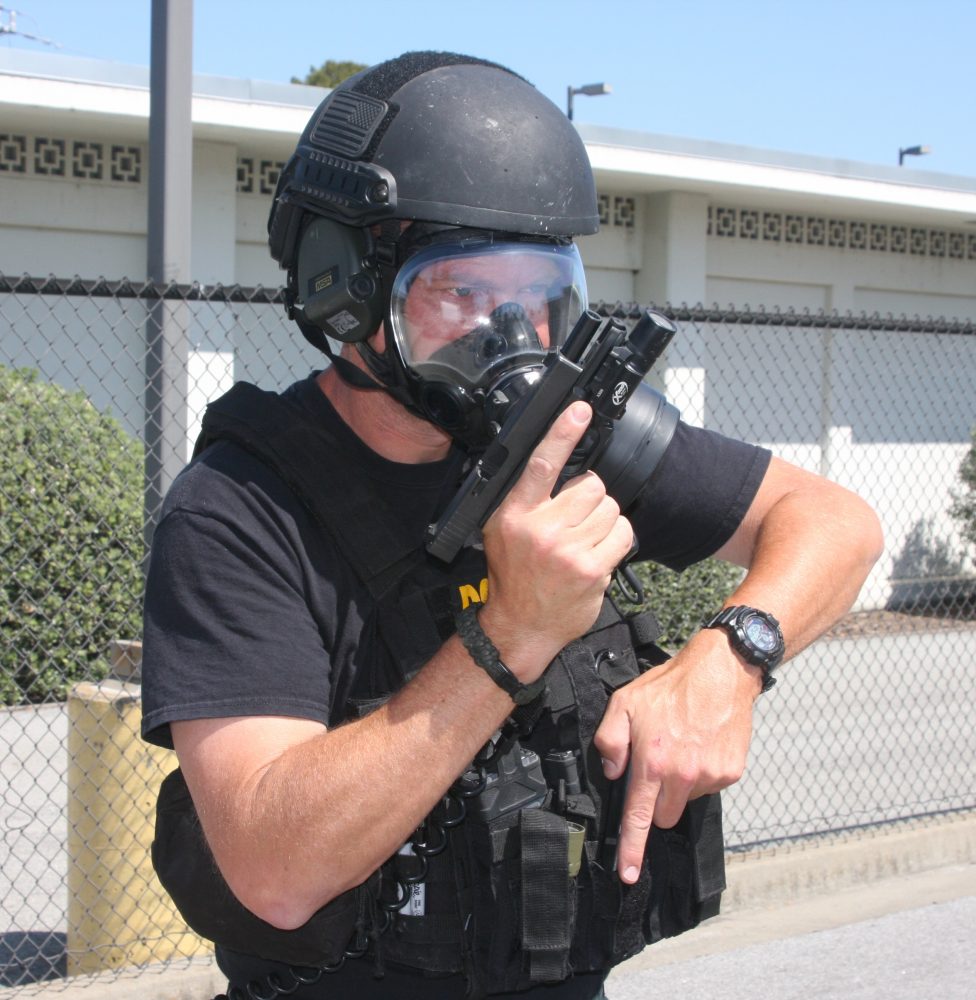
Certain shooting positions should also be avoided. It is very difficult to shoot from a prone position and obtain a good sight picture. You will also probably lose the seal on your mask. Try various shooting positions to find out for yourself what works and what does not.
Rifles equipped with a red dot sighting system such as an Aimpoint or EOTech make shooting with a mask on much easier. Simply putting the dot on the target is much easier than aligning the front and rear sights with the target. It is also easier to see the illuminated dot with the mask on compared to the dark front-sight post. Another option is to equip your weapon system with a laser and simply place the targeting dot directly on your target.
PRESCRIPTION LENSES
If you wear glasses or contact lenses, consider getting a set of prescription inserts for your mask. You cannot wear your regular glasses with your mask. If you wear contacts, you may want to remove them prior to donning the mask. In a hostile environment, you will not be able to fix any problems that may occur if they begin to irritate your eyes.
TRAINING
Train wearing your mask on a regular basis in order to become familiar with its limitations. With the popularity of force-on-force training, officers are required to use some sort of face protection. Why not use your gas mask instead of the Airsoft or Simunitions protective mask, at least on an occasional basis? The benefits will pay dividends in the long run.
If you are going to deploy with a partner or in a team, have a Safety Plan in place. Everyone should conduct “buddy checks” to see if a team member is having difficulty breathing, showing the effects of heat exhaustion or heatstroke or possibly the effects of the contaminant in the air. If so, the affected person needs to be evacuated from the area. The Operation Plan should have these contingencies accounted for.
CONCLUSIONS
Hopefully the only time you ever have to wear your gas mask is in training. But there may come a time when you need to wear it in a high-risk situation and must use deadly force to protect yourself or someone else.
Take the time now to train with your mask so you master the skills required to operate effectively. This will ensure that the requisite skills become ingrained into your subconscious, and your threat response will be second nature.
Richard Meure has been a police officer for a Northern California police agency for the past 24 years. He is a member of his agency’s tactical team and a member of a county-wide terrorism response team. He is also a certified firearms and defensive tactics instructor. He can be reached at [email protected].
